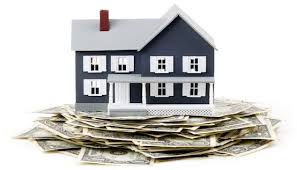save for a down payment
Saving for a down payment is one of the biggest hurdles for many first-time homebuyers. However, with the right strategies and a solid plan, you can make the dream of owning a home a reality. In this guide, we’ll explore actionable steps to save for a down payment, provide insights on buying your first home, and share practical first-time homebuyer tips to help you achieve your goals.
Understanding a Down Payment
A down payment is the upfront cash payment you make when purchasing a home. It’s typically a percentage of the home’s total price, and the amount required can vary based on the type of loan and lender requirements.
- Conventional Loans: Usually require 5%–20% down.
- FHA Loans: Require as little as 3.5% for eligible buyers.
- VA and USDA Loans: Often require no down payment but have specific eligibility criteria.
The higher your down payment, the less you’ll need to borrow, potentially lowering your monthly payments and avoiding private mortgage insurance (PMI).
How Much Should You Save for a Down Payment?
Determining your target amount depends on your budget, home price, and loan type. For example:
- On a $300,000 home:
- 5% down = $15,000
- 10% down = $30,000
- 20% down = $60,000
Keep in mind that you’ll also need to budget for closing costs (typically 2%–5% of the purchase price) and other expenses.
10 Tips to Save for a Down Payment
1. Set a Clear Goal
Start by defining your savings target. Knowing the exact amount you need will help you stay motivated and track your progress.
2. Create a Dedicated Savings Account
Open a high-yield savings account specifically for your down payment. This keeps the funds separate and allows your money to grow faster with higher interest rates.
3. Cut Unnecessary Expenses
Review your spending habits and identify areas to cut back.
- Limit dining out and subscriptions.
- Opt for budget-friendly activities and purchases.
4. Automate Your Savings
Set up automatic transfers from your checking account to your savings account. Automating this process ensures consistency and helps you save without thinking about it.
5. Increase Your Income

Boost your savings with additional income streams:
- Take on a side hustle like freelancing, ridesharing, or tutoring.
- Sell unused items online through platforms like eBay or Facebook Marketplace.
- Request a raise or look for higher-paying job opportunities.
6. Take Advantage of Down Payment Assistance Programs
Research state and local programs designed for first-time homebuyers. These programs may offer grants, low-interest loans, or tax benefits to help with your down payment.
7. Save Windfalls and Bonuses
Whenever you receive extra money—such as tax refunds, work bonuses, or gifts—deposit it directly into your down payment fund.
8. Reduce Housing Costs
If possible, lower your current housing expenses to save more.
- Move to a more affordable rental.
- Get a roommate to split costs.
- Stay with family temporarily to save on rent.
9. Track and Adjust Your Budget
Consistently monitor your spending and savings progress. Use budgeting tools like Mint or YNAB to help allocate funds toward your goal.
10. Consider Investing
For longer-term savings goals, consider low-risk investment options, such as CDs or mutual funds, to grow your money faster than a traditional savings account. However, ensure your investments align with your timeline and risk tolerance.
Common Challenges and How to Overcome Them
“I Don’t Earn Enough to Save”
Focus on small, consistent contributions. Even saving $50–$100 per month can add up over time.
“Unexpected Expenses Derail My Savings”
Build an emergency fund alongside your down payment savings to handle surprise costs without dipping into your house fund.
“Home Prices Keep Rising”
Set realistic expectations and consider starter homes or less competitive neighborhoods to make the goal more attainable.
First-Time Homebuyer Tips
1. Know Your Credit Score
A higher credit score can help you secure better loan terms, saving you money in the long run.
2. Get Pre-Approved for a Mortgage
Pre-approval helps you understand how much house you can afford and strengthens your offer when you’re ready to buy.
3. Research Mortgage Options
Compare lenders and loan types to find the best fit for your financial situation.
4. Factor in Additional Costs
Beyond the down payment, budget for expenses like property taxes, homeowners insurance, and maintenance.
5. Work with a Knowledgeable Real Estate Agent
A good agent can guide you through the home-buying process and negotiate on your behalf.
Home Saving Strategies to Accelerate Your Progress
- Live Below Your Means: Adopt a minimalist lifestyle to prioritize savings.
- Use Cashback and Rewards: Apply credit card rewards or cashback programs toward your house fund.
- Participate in Employer Programs: Some employers offer programs to help employees save for homeownership.
FAQs
1. How Long Does It Take to Save for a Down Payment?
The timeline varies based on your income, expenses, and savings rate. On average, first-time buyers save for 2–5 years.
2. What’s the Minimum Down Payment Required?
It depends on the loan type:
- FHA: 3.5%
- Conventional: 5%–20%
- VA/USDA: 0% (for eligible buyers)
3. Should I Put Down 20%?
While 20% avoids PMI and reduces monthly payments, it’s not mandatory. Many buyers start with smaller down payments and refinance later.
Start Saving for Your First Home Today
Saving for a down payment may seem challenging, but it’s achievable with the right plan and commitment. By following these home saving strategies and utilizing our down payment guide, you’ll be well on your way to buying your first home.
Remember, consistency is key. Start small, stay focused, and celebrate milestones along the way. With determination and smart financial decisions, your dream home is closer than you think! buying your first home




